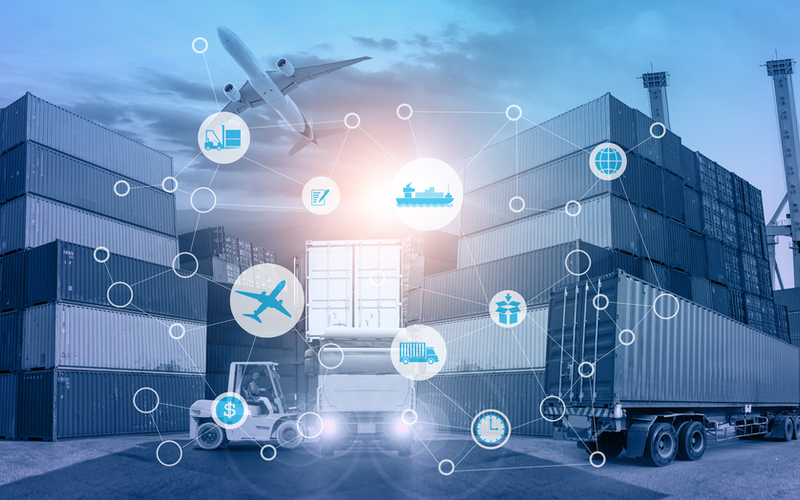Where’s My Inventory? Managing Disruption Across Multiple Supplier Tiers
In his recent blog, Anmol Khurana discussed the immediate effects of the Russia-Ukraine conflict for companies shipping products in and out of the region. But, as the conflict approaches the four-month mark, the impacts are spreading and intensifying. As many countries around the world enforce economic sanctions against Russia, global logistics networks are struggling to isolate Russian products while still ensuring inventory availability.
While Russian cargo sits on loading docks and ships, waiting to be inspected and rerouted, throughput levels are down across Europe — with noticeable effects on product availability. Even more damaging are the potential long-term impacts for the world’s food supply as Russia seizes Ukraine’s grain supplies and harvesting equipment. It’s clear that, no matter how long the Russia-Ukraine conflict lasts, it will have devastating effects on the global economy for the rest of 2022 and beyond.
Untangling Multiple Tiers of Suppliers
As multiple countries plunge into recession and critical product shortages loom, supply chain professionals must take aggressive action. However, one of the key challenges is that the world’s supply chains have become so complex and geographically dispersed – tangled webs of multiple tiers of suppliers, spanning many countries.
In a recent “Ask the Expert” feature with Industry Week, Blue Yonder’s Koushik Balasubramanian addressed the need for supply chains to become more resilient in the face of stalled inventory, product shortages, blocked shipping lanes, and other obstacles. “There’s no end in sight to these challenges,” he notes. “In fact, disruptions will likely become more frequent in the future. Increasingly global and complex, supply chains are going to have to withstand more shocks and disruptions, both of which may be more frequent and potentially more severe.”
According to Balasubramanian, a lack of real-time visibility across the end-to-end supply chain, with its many tiers of participants, is a serious disadvantage. “Mitigating disruptions as early as possible requires clear visibility into what the problem is and when it’s going to emerge. Only then can companies get out ahead of the disruption — and their competitors — and solve it,” he notes.
“The challenge is that even for companies that have invested solidly in different aspects of their supply chains, such as demand sensing and forecasting, a lot of these disruptions are still beyond their control. Even if they have a solid plan in place, they’re still going to get hit,” Balasubramanian emphasizes. “The company that has full visibility into what’s happening will be best positioned to identify the problem quickly, figure out the impact and severity of that problem, and solve it quickly.”
Enabling Multi-Tier Visibility and Analysis
While identifying every disruption across multiple suppliers, in multiple geographies, may seem impossible, advanced technology provides an answer.
Real-time and scalable modeling capabilities, powered by a digital twin, enable visibility and orchestration across the entire value chain, from procurement to transportation and fulfillment. Today’s advanced solutions also leverage artificial intelligence (AI) and machine learning (ML) to gather and assess enormous volumes of real-time data, both internal and external, then recommend immediate resolutions for disruptions such as stalled deliveries — even across a tangled network of suppliers. They apply logic and rules to flag potential problems, such as a Russian supplier that’s subject to sanctions.
Once an issue is identified, AI and ML clearly define the downstream impacts across the entire supply chain, including inventory shortages and reduced revenues. Instead of guessing at the fallout, human planners see the real-world consequences at the earliest possible opportunity.
AI- and ML-enabled optimization engines not only identify disruptions and define their impacts, but they also recommend the best possible resolution. Whether that means identifying new suppliers, shifting available inventory, finding alternative routes or another course of action, the powerful capabilities of AI and ML consider a wide range of factors and resolution options.
In many cases, resolutions can be carried out by optimization engines autonomously, based on pre-defined rules and performance targets. For more complex issues, human planners from across the multi-tier supply network can gather in virtual “situation rooms” to collaborate on a resolution, supported by real-time data and fact-based decision making.
Luminate Control Tower: Built to Manage Complexity
If this sounds futuristic and too good to be true, rest assured that the advanced technology needed to manage disruptions is available today. Blue Yonder’s proven digital solution, Luminate® Control Tower, includes functionality aimed at monitoring real-time conditions across suppliers and managing any disruptions rapidly and strategically.
Luminate Control Tower can recognize and understand the complexities of all demand and supply streams, regardless of how complicated and geographically scattered the participant network becomes. This smart digital control tower can manage supplier disruptions to arrive at resolutions that maximize both cost and service outcomes across the value chain. If inventory is stalled, whether due to economic sanctions or some other cause, Luminate Control Tower quickly solves the problem by finding new suppliers, diverting shipments, identifying open shipping routes, or taking other actions. And, because it digitally connects all supply chain participants, Luminate Control Tower ensures a synchronized and orchestrated response that maximizes results for all stakeholders.
“Luminate Control Tower creates a real-time digital representation of the supply chain, a digital twin, that gives users a holistic view of the end-to-end network,” explains Balasubramanian. “This translates into higher service levels and improved customer satisfaction at a lower cost.”
While the world watches and hopes for an end to the Russia-Ukraine conflict, unfortunately, its impacts on the world’s supply chains will continue for the foreseeable future. Following on the heels of the product shortages, production shutdowns and port closures that characterized 2020 and 2021, this new source of supply chain upheaval only reminds us that business volatility is a fact of life. Companies that prepare in advance to recognize and respond to disruptions will have a significant advantage as global supply chain uncertainty continues.

